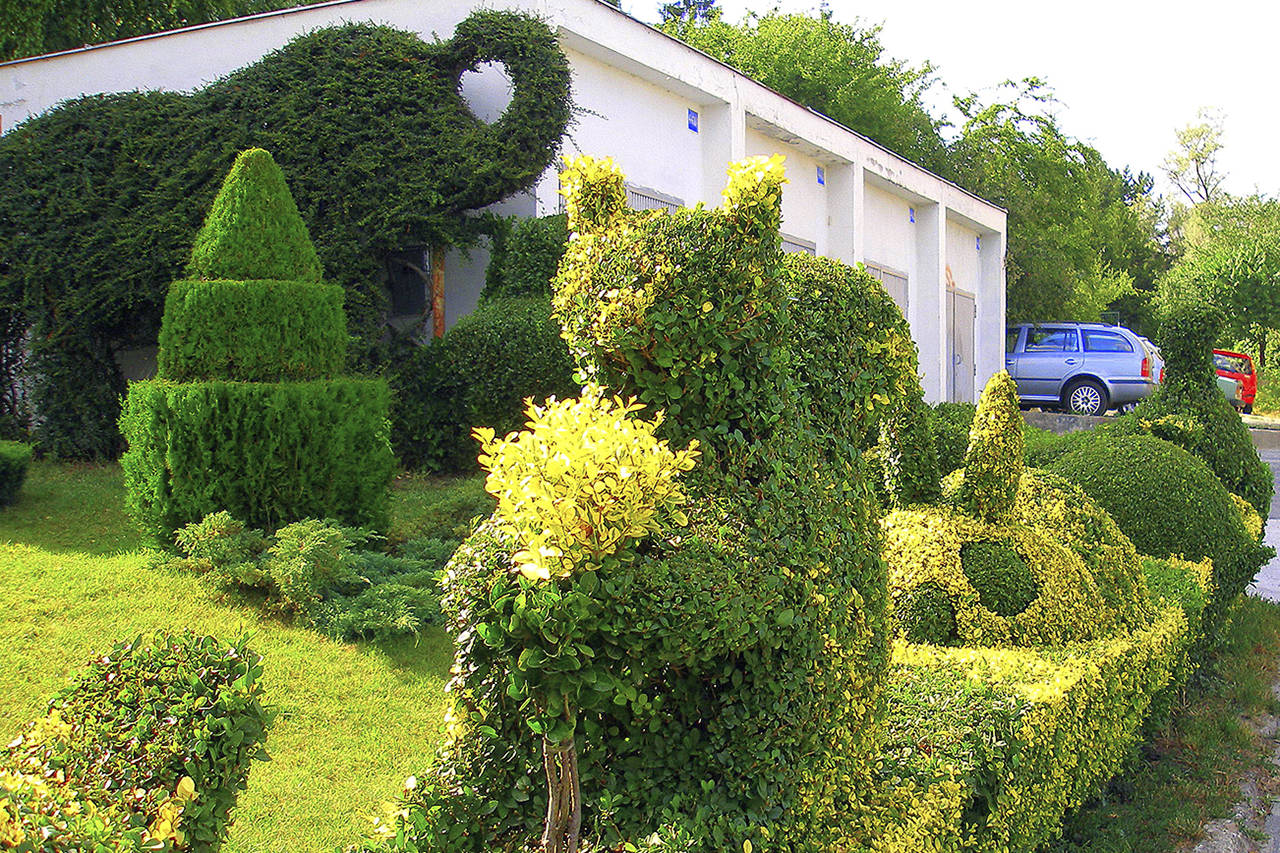By Dolores Cavanah
WSU Master Gardener
When viewing my garden, guests frequently ask: What is your favorite plant? This is like asking: Who is your favorite child?
Actually, I have several plants that I may like a bit better than others. Here are two of them:
“A” is for agapanthus
Agapanthus is an herbaceous perennial commonly called Lily of the Nile. I fondly remember it as a child in my mother’s garden in Southern California. Back then, the flowers were mostly a light to medium-blue on tall graceful stems, and they were relatively common with long strappy leaves or grasslike foliage.
Nowadays there are many cultivars available, from purple to azure to cobalt to midnight blue to all white. Some are blue with white stripes, some white with stripes of lavender. With hybridizing, there are myriad subtle color variations.
From dense clumps, the summer-blooming stems arise with large flower heads with up to 100 tiny tubular florets that open like fireworks. The stems can grow up to 6 feet, and dwarf types to 20 inches. My all-time favorite is Storm Cloud, which is tall with a very dark-blue bloom.
They can be hardy or half-hardy. In our climate here in Grays Harbor, I plant them in containers and give them protection in winter.
Agapanthus make excellent cut flowers and last for long periods in the house.
“B” is for boxwood
An evergreen shrub, boxwood (or “box”) is known as the most popular shrub in America. It has versatility in any type of garden, be it used as a formal hedge or a foundation plant.
In my garden, boxwood is a focal point, or what I call an exclamation point.
I’ve always appreciated box, but a garden trip to New Zealand several years ago allowed me to take notice of how the plants were used there. That’s where the exclamation points came in, as many of the gardens were large and had terrain similar to mine. Former sheep stations in New Zealand had become gorgeous gardens, just as my former cow pasture became the canvas on which I could express my form of art, ringing 6 acres of cultivated garden with fir and alder.
While the American and English box are most familiar, there are about 90 species and 365 different cultivars. Buxus sempervirens is a low-maintenance shrub. Fall is the best time for planting and winter the best time for pruning. Box likes full sun and well-drained soil, and it can be sheared to create any form you may choose. This makes it a good candidate for topiary, which can be planted in containers. A balanced fertilizer in spring and fall is all that’s needed.
About half of my boxwoods are in containers, some on my deck and more about the garden. These create the exclamation points, for instance, at the beginning or ending of a path, on either side of steps, or here and there for structure in the garden.
It is said that boxwood is easy to propagate by cuttings. In New Zealand, I met a gardener who had an enormous greenhouse dedicated to propagating for use in her formal garden. We were shown her propagations in various sizes throughout her garden. So far, I haven’t been successful in boxwood propagation.
Boxwood hedges are mostly used where there is level ground for formal edging, parterres and defining spaces as garden rooms, as well as for foundation cover-up.
In England and Europe, boxwood is being attacked by a disease that is wiping out large numbers of the beloved plant. Gardeners there are having to find substitutes to fill in where they have traditionally depended on boxwood. Fortunately, to my knowledge, that disease hasn’t come to the U.S.
This article, by Master Gardener Dolores Cavanah, is the beginning of an occasional series in which she describes the plants she most admires at her expansive garden at Schafer Meadows, east of Montesano.


